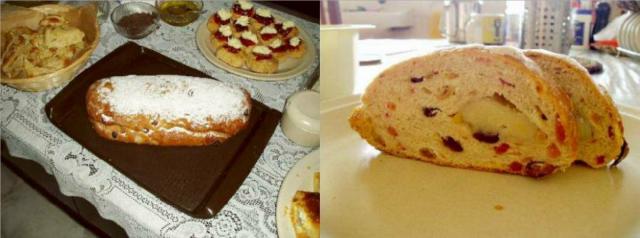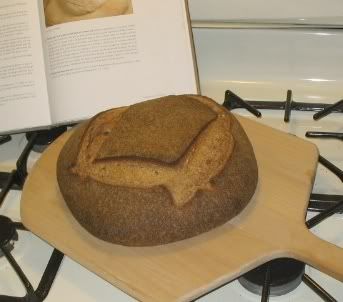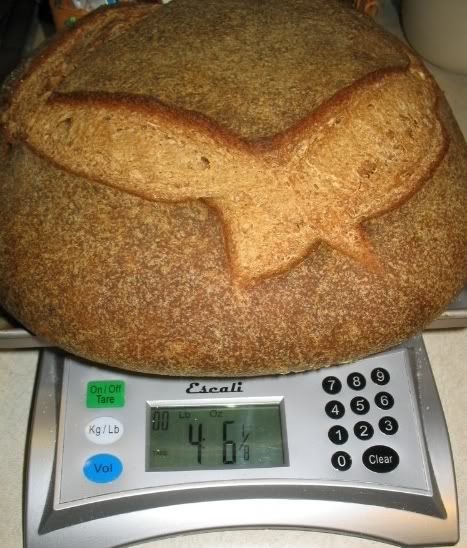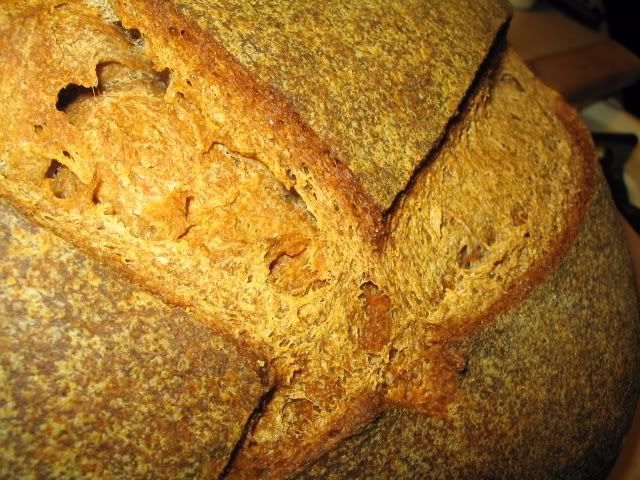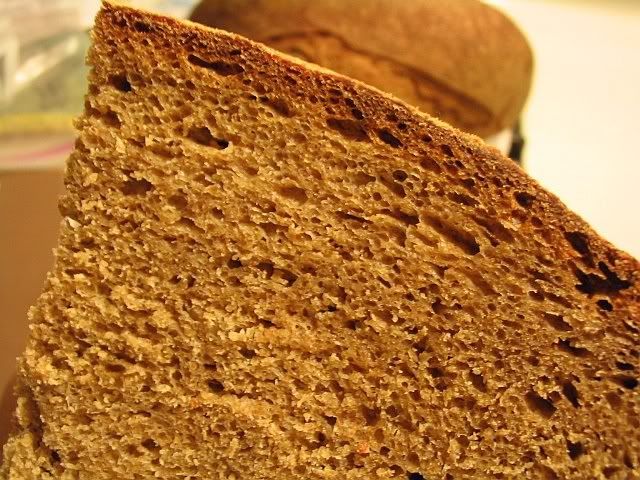So I have baked a lot of bread this weekend, if you count Friday. Friday saw the BBA pugliese.


I liked it, but it didn't turn out the way I expected it to. It wasn't as soft as it looked like it would be in the book photo. The book photo bread is all squooshed down on top, as if it has a ciabatta-like, softer crust. Also, my crumb wasn't near as open. But, it was still nice, sort of like a generic Italian bread.
Yesterday I started to bake some sandwich bread (just my usual recipe), but then the day got short on me and I ended up putting the shaped loaves in the fridge for overnight. I baked them this morning before church, and they seem different. I haven't sliced them yet, but it does seem like the crust might be a little chewier. There are lots of little blisters all over the crust, too, which they usually don't have. It will be interesting to see what the crumb texture (and flavor) are like.
I also baked Bill's sourdough pagnotta today with my new starter. Now this is a bread I can get behind!!! With a big, wide open mouth!


It's gorgeous, albeit a bit flat. It's such a wet dough that I just don't think it can do much. But my starter performed wonderfully, doubling the dough in 4 hours and doubling the shaped boules in 3 hours. Fantastic. I did a few things differently than the recipe--I made up a sponge last night, using the starter, water, and just the AP flour. Let it sit overnight on the counter. It was super sour and foamy this morning, which worried me, bc I don't like really sour bread. But I kept going. I used KAF AP, KAF bread, and then for that last 100 g of flour, I substituted organic whole wheat graham flour from Hodgson Mill. It made a beautiful dough. I also used gray sea salt from France. And, I mixed the dough in my mixer rather than doing all of the folds. It took about 10 minutes at med-high speed to get a windowpane.
I proofed the shaped boules in improvised bannetons, namely wood salad bowls lined with smooth kitchen towels and dusted with flour. Baked them at 500 for 20 minutes and did the steam thing (I baked the first loaf without the steam, and it got less oven spring than the other two).
The crust is thin, crisp but chewy, and nice and brown. The crumb is open, holey, smooth and moist (almost tastes buttery). And most importantly, it isn't too sour...it's just right. And so, count me as another "Bill's Sourdough Pagnotta" convert!
